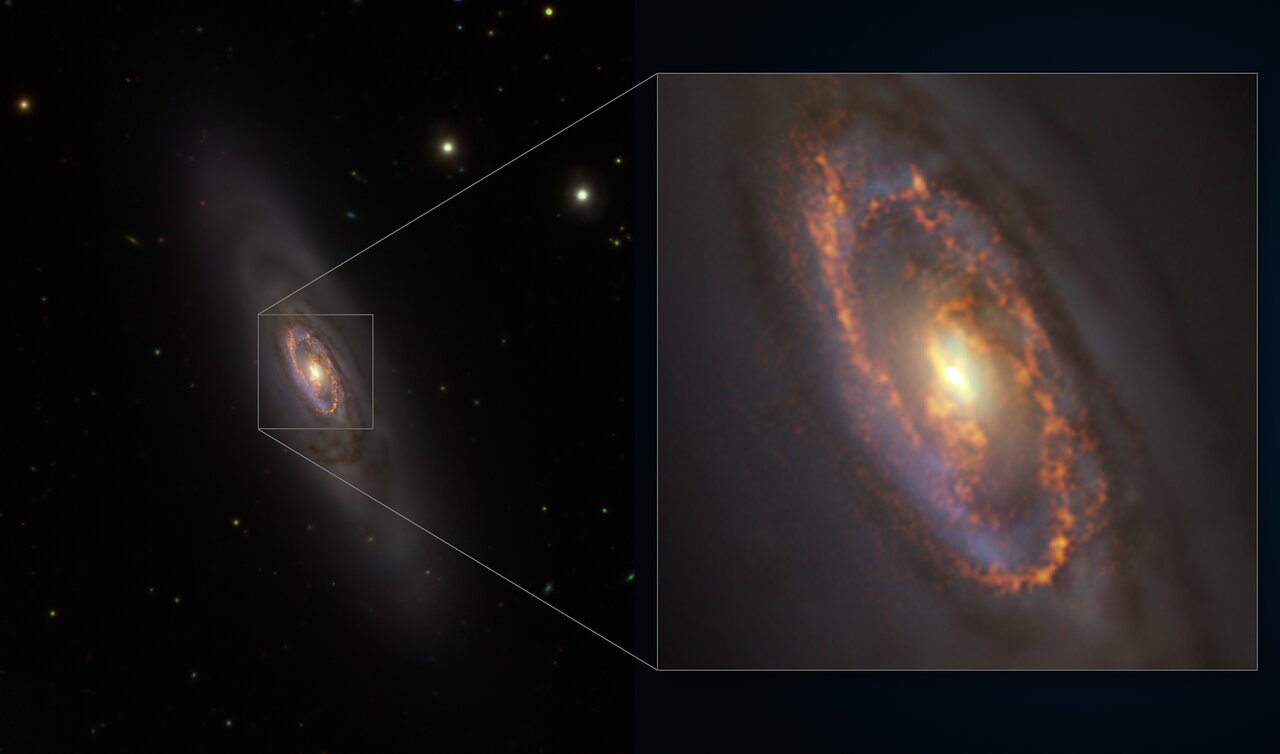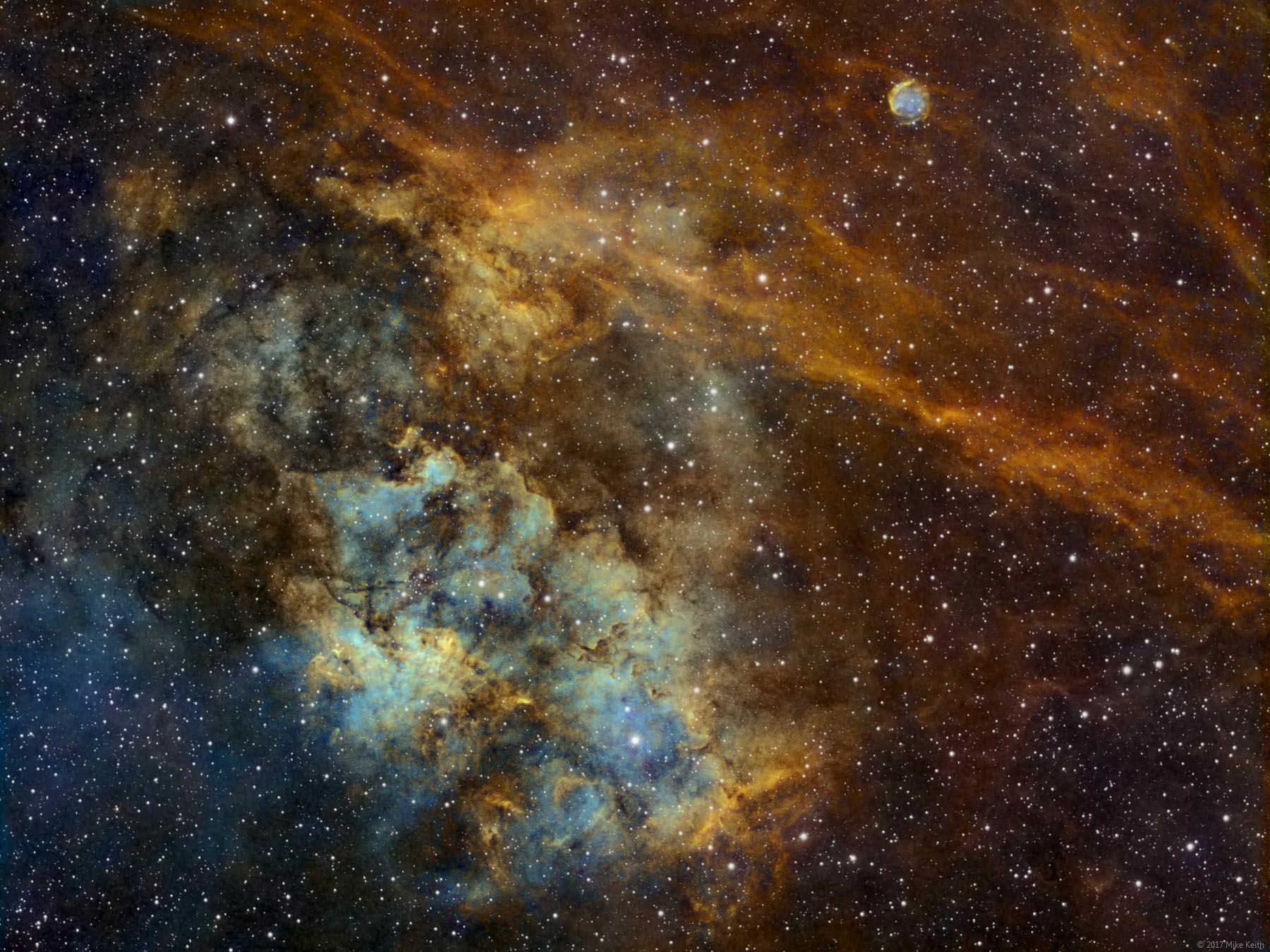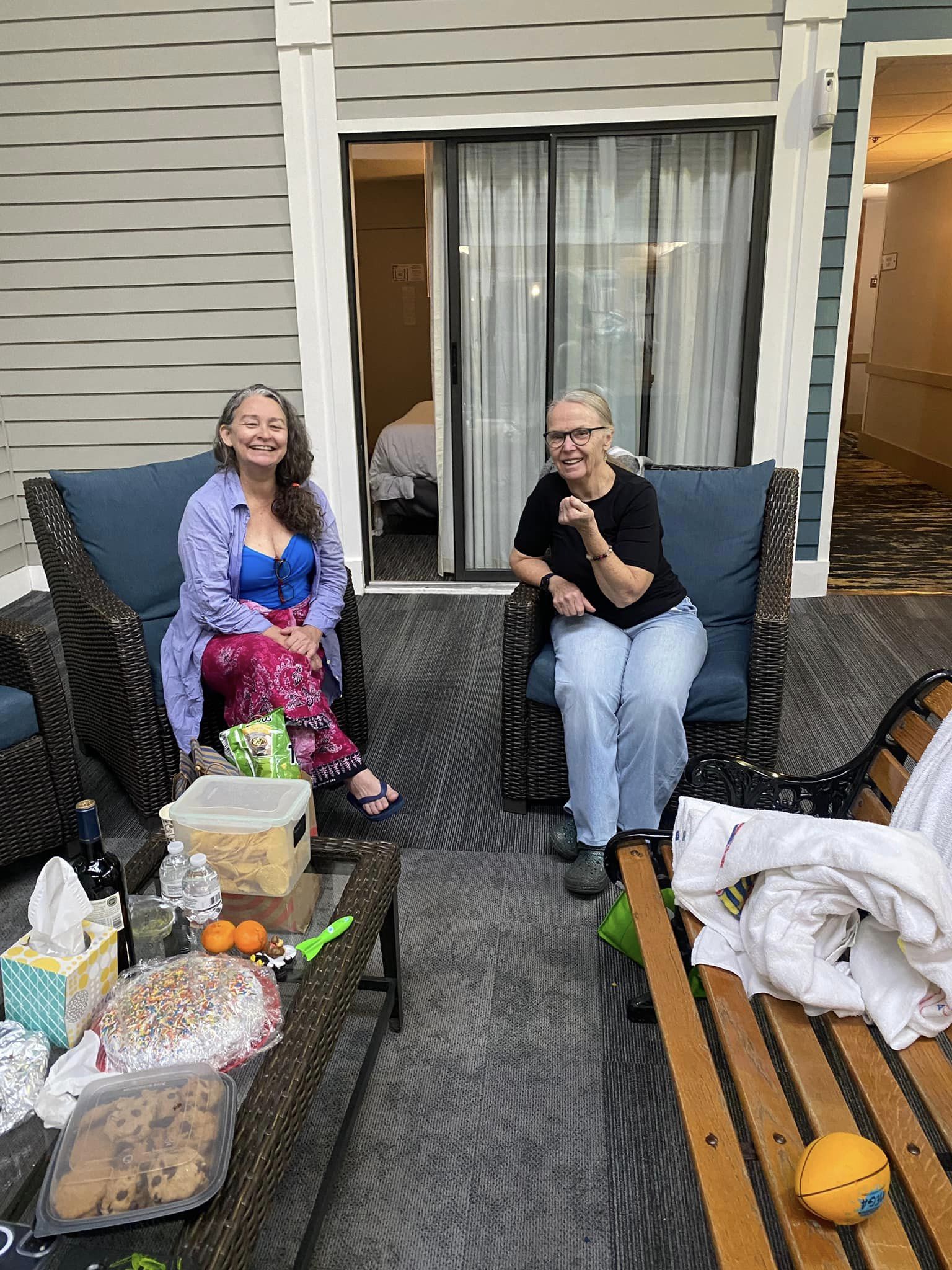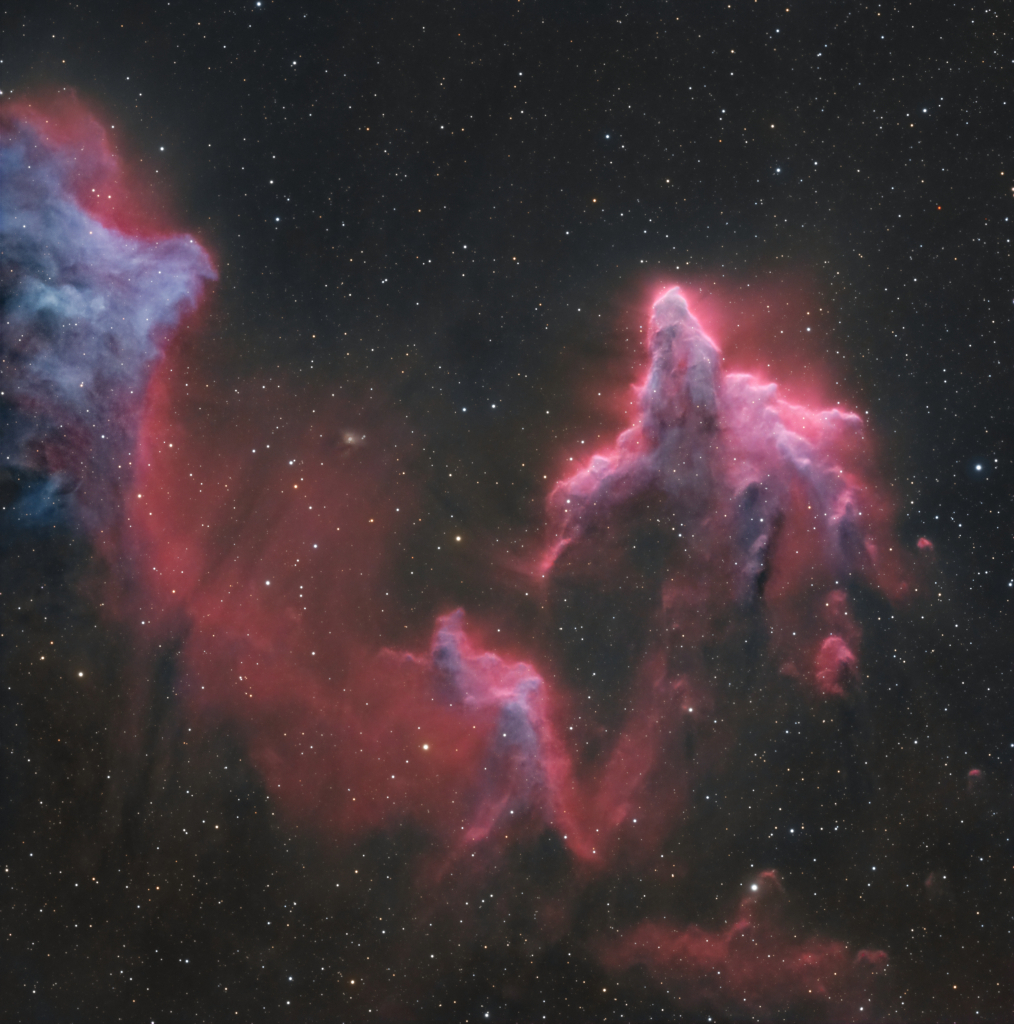Blog
Something odd is happening in NGC 1386, a spiral galaxy located 53 million light years away in the constellation Eridanus. This Picture of the Week combines data from the VLT Survey Telescope (VST), hosted at ESO’s Paranal Observatory in Chile, and the Atacama Large Millimetre/Submillimetre Array (ALMA), operated by ESO and its international partners. When astronomers observed the central regions of this galaxy, they found new stars forming… albeit in a peculiar way.
Stars often form within stellar clusters – groups of thousands of stars that originate from massive clouds of molecular gas. The blue ring at the centre of this galaxy is ripe with stellar clusters full of young stars, as seen by VST. A new study led by Almudena Prieto, an astronomer at the Instituto de Astrofísica de Canarias in Spain, used data from ESO’s Very Large Telescope (VLT) and the NASA/ESA Hubble Space Telescope to look at this ring in more detail. The data shows that all of these star clusters formed 4 million years ago, almost simultaneously. It is the first time that synchronised star formation has been observed in a galaxy that contains mostly old stars.
The same study used ALMA to reveal even more secrets in this galaxy. Shown in this picture as a golden ring are a multitude of clouds of gas, ready to form a second batch of young stars. For these to be born, though, we will still have to wait 5 million years. Even if old, NGC 1386 keeps rejuvenating itself.

Richard Bona (born 28 October 1967) is a Cameroon-born American multi-instrumentalist and singer.
Bona Penda Nya Yuma Elolo was born in Minta, Cameroon, into a family of musicians, which enabled him to start learning music from a young age. His grandfather was a griot – a West African singer of praise and storyteller – and percussionist, as his mother was a singer. When he was four years old, Bona started to play the balafon. At the age of five, he began performing at his village church. Not being wealthy, Bona made many of his own instruments: including flutes and guitars (with cords strung over an old motorcycle tank).
His talent was quickly noticed, and he was often invited to perform at festivals and ceremonies. Bona began learning to play the guitar at the age of 11, and in 1980, aged just 13, he assembled his first ensemble for a French jazz club in Douala. The owner befriended him and helped him discover jazz music, in particular that of Jaco Pastorius, which inspired Bona to switch his focus to the electric bass.
Bona emigrated to Germany at the age of 22 to study music in Düsseldorf, soon relocating to France, where he furthered his studies in music.
While in France, he regularly played in various jazz clubs, sometimes with players such as Manu Dibango, Salif Keita, Jacques Higelin and Didier Lockwood.
In 1995, Bona left France and established himself in New York, where he still lives and works. In New York he played bass guitar with artists including Joe Zawinul, Larry Coryell, Michael and Randy Brecker, Mike Stern, George Benson, Branford Marsalis, Chaka Khan, Bobby McFerrin, and Steve Gadd.
more...Tuck Andress is a guitarist born October 25, 1952 in Tulsa, Oklahoma. Best known as half of the guitar/vocal duo, Tuck & Patti. Considered one of the finest guitarists in the world, his masterful fingerpicking technique allows him to sound as if three separate guitars are playing at once.
Tuck Andress and his wife, Patti Cathcart Andress,(Tuck and Patti) have released several albums on the Windham Hill label, as well as on Epic Records and 33rd Street Records. The duo has been very successful with multiple albums hitting the top ten on the Contemporary Jazz Charts.
Andress used to be a session performer for The Gap Band.
His neice is singer-songwriter Annie Clark who performs under the name St. Vincent.
more...Keith Anderson CD (28 October 1944 – 27 March 2020), better known by the stage name Bob Andy, was a Jamaican reggae vocalist and songwriter. He was widely regarded as one of reggae’s most influential songwriters.
Bob Andy was one of the founding members of The Paragons, along with Tyrone Evans and Howard Barrett, with John Holt later joining briefly before being replaced by Vic Taylor. Andy left after Holt rejoined and worked for Studio One delivering records and songwriting before embarking on a solo career.
His first solo hit record in 1967, “I’ve Got to Go Back Home”, was followed by “Desperate Lover”, “Feeling Soul”, “Unchained”, and “Too Experienced”. He also composed songs for other reggae artists, including “I Don’t Want to See You Cry” for Ken Boothe, and “Feel Like Jumping”, “Truly”, and “Melody Life” for Marcia Griffiths. He had several hits in the late 1960s, including “Going Home”, “Unchained”, “Feeling Soul”, “My Time”, “The Ghetto Stays in the Mind”, and “Feel the Feeling”. Some of these, and his 1992 hit, “Fire Burning”, have come to be regarded as reggae standards and several have been covered several times by other artists.
In the early 1970s, he recorded with Marcia Griffiths as Bob and Marcia, initially for Studio One, but later under producer “Harry J” Johnson‘s tutelage.They had a major hit in the UK with “Young, Gifted and Black” (with orchestral backing added for the UK market) and spent time there promoting it, touring with Elton John and Gilbert O’Sullivan. When the tour ended they were still not getting any money, and were told by people in England that Harry J had got the cash. They returned to Jamaica. Andy said “when we left Jamaica, Harry J did not have a studio. When we came back, he had a studio and a brand new Benz.”
more...Glen Moore (born October 28, 1941) is an American jazz bassist, who occasionally performs on piano, flute and violin.
Moore was born in Portland, Oregon, United States. His performing career began at age 14 with the Young Oregonians in Portland, where he met and played with Native American saxophonist, Jim Pepper. He graduated with a degree in History and Literature from the University of Oregon. His formal bass instruction started after college with Jerome Magil in Portland, James Harnett in Seattle, Gary Karr in New York, Plough Christenson in Copenhagen, Ludwig Streicher in Vienna and Francois Rabbath in Hawaii. His main instrument is an upright bass which was made by Klotz in Tyrol around 1715. He mostly plays it in a personal unique tuning, using a low and a high C string.
Moore is a founding member of Oregon, but worked also regularly with Rabih Abou-Khalil, Vasant Rai, Nancy King and Larry Karush.
more...“In no other period of history were the learned so mistrustful of the divine possibilities in man as they are now.”
Gopi Krishna, 1970

Here’s another section of the wonderfully complex and beautiful nebulosity that runs throughout the constellation Cygnus, this region being just a few degrees northwest of the very bright star Deneb. The mostly blue nebula is Sharpless 115 (= LBN 357) and the orange parts are a combination of LBN 352 and LBN 362. The “bubble” in the upper right is Sharpless 116 (= PK 084.9+04.4). As you might guess from the fact that it is included in the PK catalogue of planetary nebulae, this was considered to be a planetary nebula for many decades, but a research paper in 1991 (by Pismis, Hasse, Quintero) argues that it is not a planetary (i.e., composed of gas from a dying star) but rather an ordinary emission nebula.

more...
Philip Catherine (born 27 October 1942) is a Belgian jazz guitarist.
Philip Catherine was born in London, England, to an English mother and Belgian father, and was raised in Brussels, Belgium. His grandfather was a violinist in the London Symphony Orchestra. Catherine started on guitar in his teens, and by seventeen he was performing professionally at local venues.
He released his debut album, Stream, in 1972. During the next few years, he studied at Berklee College of Music in Boston and with Mick Goodrick and George Russell. In 1976, he and guitarist Larry Coryellrecorded and toured as an acoustic duo. The same year, when Jan Akkerman abruptly left Focus, Catherine replaced him in the band. The following year, he recorded with Charles Mingus, who dubbed him “Young Django”. In the early 1980s, he toured briefly with Benny Goodman. He was in trio with Didier Lockwood and Christian Escoudé, then in a trio with Chet Baker. During the 1990s, he recorded three albums with trumpeter Tom Harrell.
more...Babs Gonzales (October 27, 1919 – January 23, 1980Newark, NJ), born Lee Brown, was an American bebopvocalist, poet, and self-published author. His books portrayed the jazz world that many black musicians struggled in, portraying disk jockeys, club owners, liquor, drugs, and racism. “There are jazz people whose influence can be described as minor,” wrote Val Wilmer, “yet who are well-known to musicians and listeners alike … You’d have to be hard-pressed to ignore the wealth of legend that surrounds Babs Gonzales.” Jazz writer Jack Cooke explained that Gonzales “assumed the role of spokesman for the whole hipster world… [becoming] something more than just a good and original jazz entertainer: the incarnation of a whole social group.
more...Back at the old Northern Pacific Railway Como Repair Shops Historic District at Bandana Square in St Paul. Now a Best Western. We’re having a belated Birthday Pool Party with daughter, grandkids, cousins and friends! All my kids had parties here when they were little many years ago!





more...
A telescopic view toward the constellation Cassiopeia, the colorful skyscape features the swept-back, comet-shaped clouds IC 59 (left) and IC 63. About 600 light-years distant, the clouds aren’t actually ghosts. They are slowly disappearing though, under the influence of energetic radiation from hot, luminous star gamma Cas. Gamma Cas is physically located only 3 to 4 light-years from the nebulae and lies just above the right edge of the frame. Slightly closer to gamma Cas, IC 63 is dominated by red H-alpha light emitted as hydrogen atoms ionized by the hot star’s ultraviolet radiation recombine with electrons. Farther from the star, IC 59 shows less H-alpha emission but more of the characteristic blue tint of dust reflected star light. The field of view spans over 1 degree or 10 light-years at the estimated distance of the interstellar apparitions.

more...
Eddie Henderson (born October 26, 1940) is an American jazz trumpet and flugelhorn player. He came to prominence in the early 1970s as a member of pianist Herbie Hancock‘s Mwandishi band, going on to lead his own electric/fusion groups through the decade. Henderson earned his medical degree and worked a parallel career as a psychiatrist and musician, turning back to acoustic jazz by the 1990s.
Henderson was born in New York City on October 26, 1940. At the age of nine he was given an informal lesson by Louis Armstrong, and he continued to study the instrument as a teenager in San Francisco, where he grew up, after his family moved there in 1954, at the San Francisco Conservatory of Music.
more...Milton Silva Campos do Nascimento (Portuguese pronunciation; born October 26, 1942), also known as Bituca, is a Brazilian singer-songwriter and multi-instrumentalist. Nascimento has won five Grammy Awards, including Best World Music Album for his album Nascimento in 1998.
more...Mahalia Jackson (born Mahala Jackson; October 26, 1911 – January 27, 1972 NOLA) was an American gospel singer, widely considered one of the most influential vocalists of the 20th century. With a career spanning 40 years, Jackson was integral to the development and spread of gospel blues in black churches throughout the U.S. During a time when racial segregation was pervasive in American society, she met considerable and unexpected success in a recording career, selling an estimated 22 million records and performing in front of integrated and secular audiences in concert halls around the world.
The granddaughter of enslaved people, Jackson was born and raised in poverty in New Orleans. She found a home in her church, leading to a lifelong dedication and singular purpose to deliver God’s word through song. She moved to Chicago as an adolescent and joined the Johnson Singers, one of the earliest gospel groups. Jackson was heavily influenced by musician-composer Thomas Dorsey and blues singer Bessie Smith, adapting Smith’s style to traditional Protestant hymns and contemporary songs. After making an impression in Chicago churches, she was hired to sing at funerals, political rallies, and revivals. For 15 years, she functioned as what she termed a “fish and bread singer”, working odd jobs between performances to make a living.
more...More Posts
- The Cosmos with Sh2-155
- Michael Shrieve Day
- Louis Bellson Day
- World Music with David Cerreduela
- Daily Roots with Amy Winehouse
- BEAU KOO JACKS 7-5-18
- The Cosmos with NGC 1032
- Robbie Robertson Day
- Smiley Lewis Day
- World Music with Aladár Csiszár
- Daily Roots with Winston McAnuff
- Happy 4th of July 2018
- The Cosmos with NGC 6946
- Bill Withers Day
- Fred Wesley Day
- World Music with Stony Point
- Daily Roots with the Revolutionaries
- The Cosmos with UGC 5340
- Dr Lonnie Smith Day
- Johnny Coles Day